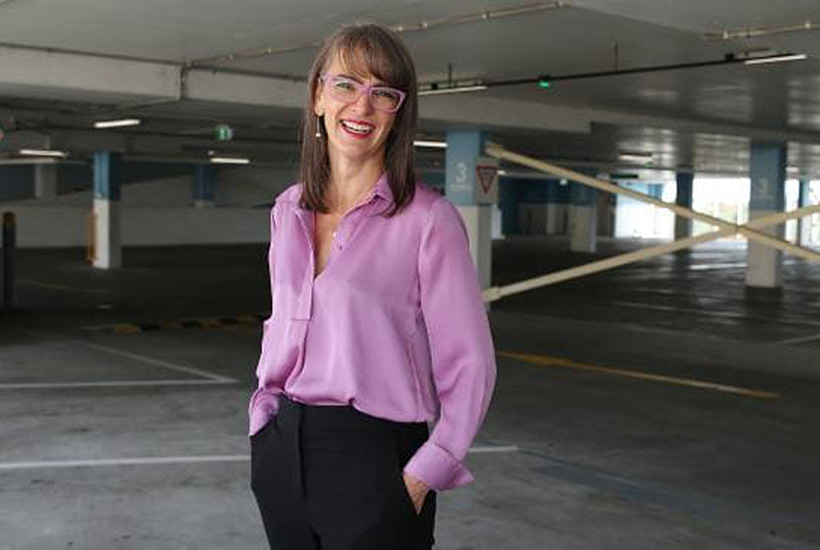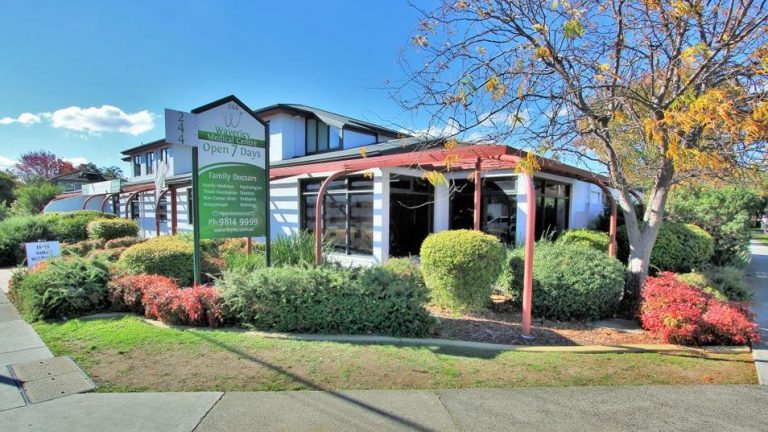Experts deliver verdict on workplaces’ post-Coronavirus future

Our CBDs may never be quite the same again, thanks to the giant global experiment of working from our homes. We asked developers, landlords, urban planners and strategists for their take on the future.
AMANDA STEELE
Executive managing director, property management Pacific, CBRE
There are some people who see this as the death knell for offices. Now that we’re used to working remotely surely there’s a cost saving to be had?
I don’t think so. Once we’re through our stint at home we will see people flood back to the office. In fact, we know this happened in Asia in the markets where social isolation was put in place and then retracted. As social creatures we look for ways to connect and already we can see that the Zoom connection is wearing thin.
However, it’s likely that we will never work in the same way again. Our expectation of being able to work remotely will increase. We have proven that it can happen en masse and I expect workers will want that flexibility more than ever. I also expect that workers will not want to always be at home. Working close to home has great advantages — near home, family and convenience. I’d anticipate that some of those smart retail landlords who have started to test co-working hubs in suburban centres might benefit from our desire to move to flexibility in workplaces.
As well, the recent push for landlords to provide high-quality client experiences, such as concierge services, will extend to community care. We’re already hearing from tenants who are looking for us to assist them in how they can give back, how we can take this incredible challenge and become a better community as a result of it.
I’ve heard a few suggest that offices will come back and agile working will be a thing of the past, that we’ll want our own secure space. Interestingly I’ve heard this only from an older generation who were more comfortable with singular office space. Most of the workforce are very comfortable working with open-plan space and shared desk space. As we are being forced to learn to collaborate more to solve the greatest community problem the world has ever seen, I can’t imagine us wanting to retreat to space that will limit collaboration. To do so would be to take a massive backward step.
Organisations that thrive out of this crisis will be those that understand the power of unifying the community and workforce. Those that take an isolationist approach will not prosper and will not thrive.
My belief is that post COVID-19 workspaces will harness the ability for us to collaborate, expand on our desires to work flexibly and allow us the freedom that we are currently missing so acutely.
ANNEKE THOMPSON
National director, research, Colliers International
It is likely that offices will move to have hygiene stations where sanitiser, wipes, and cleaning products are available. This will give more comfort for those firms, in particular, that have not desking. Co-working operators could also think about offering this service too. There may be a check-in person at a front desk who may ask questions, including what country have you recently arrived from, what flight number were you on? Security will become paramount.
This may be the case for at least a year until a vaccine is produced, as it is likely COVID-19 flare-ups will continue around the world, and if we have to do contact tracing, understanding who has been in your office and where they have come from will be paramount.
“Zoom rooms” could become more normalised, as we have quickly found greater acceptance of videoconferencing. It might be that Zoom rooms are provided as part of a base-building experience with a best-in-class video experience available. That way workplaces wouldn’t have to provide themselves. It could be an opportunity for landlords to promote this experience in all their buildings around the country, which could work to build tenant loyalty nationally.
Workplaces will still be exceptionally important, and we expect a lot of companies will do some work on understanding the productivity gains and losses during this WFH experiment. It may be that certain parts of their business benefited, whereas for others it will have a huge negative impact on loss of collaboration and ideas.
Culture always will be important, particularly after what will be one of the most stressful times we have all endured in our lifetimes. It is very difficult to build and maintain a firm culture without face-to-face contact. My view is this experience will be a big lesson and drive home the importance of the workplace to a firm’s culture.
KEVIN GEORGE
Executive general manager, office, Dexus
The coronavirus crisis has quickly put into perspective the positives of working in an office, such as the value of face-tanneko-face collaboration for sparking innovation or simply the basic human need for social connection.
The forced transition to working from home has been a great exercise for many organisations in testing their business continuity plans and resilience. The overwhelming feedback is that it’s viable, but at scale and productivity is hard to sustain. Many are contemplating how they can use videoconferencing and other collaboration tools to support more flexibility for their workforce in the future, but most can’t wait to get back into the office.
We are hearing from our customers that there is a general sense of missing the dynamic of the office environment, both from a professional and personal perspective.
Some have commented that not all their staff have suitable spaces or circumstance: issues mentioned include those in shared accommodation, school age or young children at home, unsuitable space or furniture to operate.
There are also implications for employees’ physical and mental wellbeing. Utilisation of videoconferencing has never been greater and an effective tool in this scenario. However, as remote work has led to extended periods of time at a desk using domestic chairs, tables rather than ergonomic office furniture, and for many, shared spaces with housemates or children, it can be uncomfortable and is sure to take a toll on team members’ overall health.
Other employers are thinking that they can deploy teams to work from home on a temporary and staged basis, when or if they need to refit their premises rather than move or secure temporary space.
For our customers, we send out regular updates on government guidelines and how we are responding, supported by stories and wellbeing-related resources on our building portals which connect directly to customer employees. Fitness offerings have gone online, as have learning sessions.
Looking to the future, we are planning for a return to work scenario that will have a focus on getting our customers back to normal as soon as possible. The quick take-up of online resources has demonstrated the need to remain connected when not physically at your desk, highlighting opportunities for technology to take this to a new level. Supporting customers on the go with technology at their fingertips is something we are trialling. But one thing is for sure in a post-coronavirus world; offices will always be a place to do business and, now more than ever, it is evident that they are the catalyst for enduring success.
NATALIE SLESSOR
Head of customer and product futures, Lendlease
This giant global experiment in working from home certainly answers one question: the office is well and truly alive.
Humans are social animals and the thing we are missing are the spaces between meetings, the corridor conversations and way of riffing off each other.
We expect less shared workplace strategies such as hot desking. Do we really want to share and move around all the time? The value in that is certainly going to be questioned. There’s already been a reversion from shared workplace strategies in any case; this is just speeding that up. Tenants will want more space because you need one space per person rather than less than that. At home we are innovating on the fly. We are hacking stuff. For years, big corporates have tried to get an innovation culture and now we’ve gone into fifth gear in terms of that.
There had been a kind of arms race between some commercial developers in terms of how many perks they could add to their buildings, but now we will revert to more simplicity. We have The Local Office shared spaces concept where employees can work locally and have concentrated time to work alone but still be connected to the city. It’s a hub-and-spoke type model such as a Qantas lounge cleaned daily. It’s a good option for split offices and might be a potential re-entry strategy for a lot of businesses coming back online. We are going to scale up really quickly.
We’ve been doing wellness for a while and I think we’re finding work is good for you by being more engaged with the world by having purpose. There’s been a real ground shake in people’s sense of stability. Many are going to find the workplace very important to their sense of stability.
There’s a great groundswell around social sustainability. Big businesses and commercial developers will connect their outcomes more with social sustainability. We’re going to accelerate by five years probably as a sector. It’s suddenly really obvious that the social difference between the haves and the have-nots is now nothing. The virus is not discriminating on that basis.
I think there’s a pivot where we all want to be connected with each other and we all have more empathy with people from all of ways of life or socio-economic backgrounds.
Digital and social media is keeping you going a little, but there might be a little lean away from that afterwards.
CAMPBELL HANAN
Head of office and industrial, Mirvac
We’re spending a lot of time thinking about this and we have to work out what is COVID-19 related and what is likely due to pre-existing changes in how we see the future of work. It really comes down to what employee engagement looks like after this event.
At home the bandwidth is going to be an issue and there are multiple disadvantages. But big questions for employee engagement are: How do people get motivated and managed when they’re working from home? If you are working in a large organisation, people want job satisfaction, recognition and promotion. How do you create an environment where you can capture that and attract the best talent when you are at home? There are big questions about that as we are missing almost the entire corporate environment.
We are already working in a more agile format where we have tightened density within offices. And if we wind the clock forward three years, are organisations truly capable of changing to allow more people to work from home?
How would communication work in the workplace as businesses are evolving? How do you measure KPIs when you can’t see your staff? Can you really attract and retain talent in this environment? How do you recognise natural leaders? Those things are going to be really challenging in any future environment. There are a number of businesses that have built themselves into tribes. There are red teams and blue teams, and they alternate in the office, but then you don’t have those teams interacting. A big part of this is how do we keep evolving these customer experiences from a stimulation perspective and provide spaces that give purpose? I think a sense of aspiration is going to be one of the key things that will inhibit working from home.
This article originally appeared on www.theaustralian.com.au/property.






